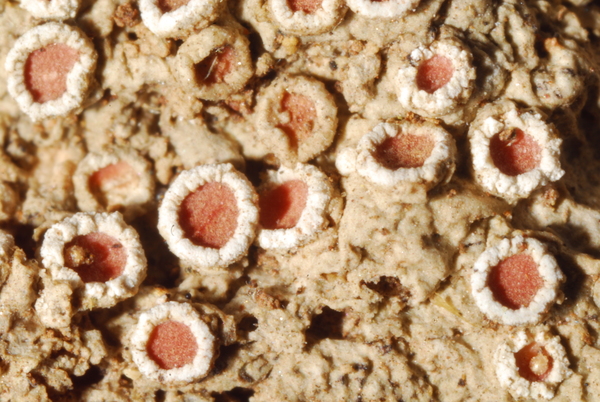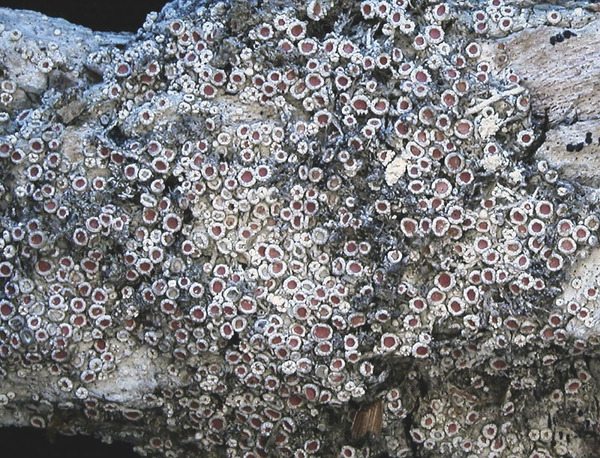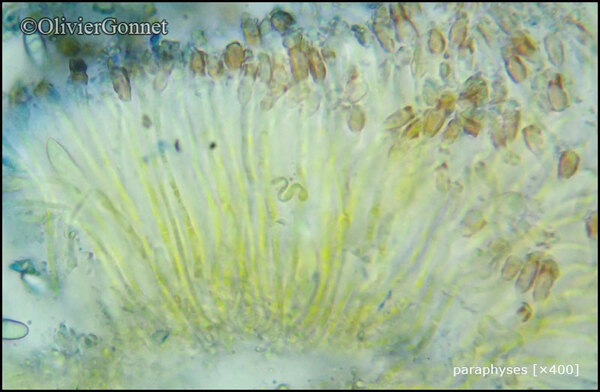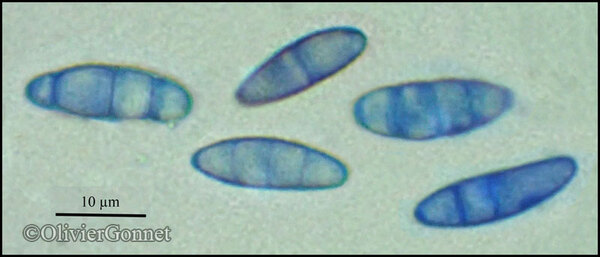Gyalecta ulmi (Sw.) Zahlbr.
in Engler & Prantl, Natürl. Pflanzenfam., 1, 1: 126, 1905. Basionym: Lichen ulmi Sw. - N. Acta Acad. Upsal., 4: 247, 1784.
Synonyms: Gyalecta rubra (Hoffm.) A. Massal.; Lecania rubra (Hoffm.) Müll. Arg.; Lecanora rubra (Hoffm.) Ach.; Lepadolemma rubrum (Hoffm.) Trevis.; Phialopsis rubra (Hoffm.) Körb.; Phialopsis ulmi (Sw.) Arnold
Distribution: N - Ven, Lomb, Piem, Emil (Fariselli & al. 2020). C - Tosc, Marc, Umb (Ravera 1998, Ravera & al. 2006, 2021c), Laz (Ravera 2001), Abr (Nascimbene & al. 2019, Gheza & al. 2021), Sar (Zedda 2002, 2002b, Zedda & al. 2001). S - Pugl (Nimis & Tretiach 1999), Bas (Potenza 2006, Potenza & Fascetti 2012, Ravera & al. 2021c), Cal (Puntillo 1996), Si (Grillo 1996).
Description: Thallus crustose, thin, smooth, rarely cracked or finely verrucose-granular, white to white-grey. Apothecia (0.5-)1-1.8(-2) mm across, finally sessile, with a concave to flat, pink, reddish or finally reddish brown, initially thinly white-pruinose disc, and a densely white-pruinose, smooth to crenate proper margin. Proper exciple thick, of rounded cells; epithecium orange-brown to chestnut brown; hymenium and hypothecium colourless; paraphyses coherent, simple or sparingly branched in upper part; hypothecium colourless. Asci 8-spored, cylindrical to elongate-subclavate, thin-walled, without tholus, the wall K/I+ blue. Ascospores 3-septate (rarely with an additional oblique septum), hyaline, broadly ellipsoid, (12-)15-20(-25) x 5-7(-9) μm. Photobiont trentepohlioid. Spot tests: K-, C-, KC-, P-, UV-. Chemistry: without lichen substances. Note: a temperate lichen found on mature trees (especially near the base of Ulmus, but also on other trees with base-rich bark, such as Acer and Fraxinus), more rarely on mosses on steeply inclined faces of calciferous rocks, probably more frequent in the past; there are no recent records from Northern Italy. It is included in the Italian red list of epiphytic lichens as “Near-threatened” (Nascimbene & al. 2013c).
Growth form: Crustose
Substrata: bark, soil, terricolous mosses, and plant debris
Photobiont: Trentepohlia
Reproductive strategy: mainly sexual
Commonnes-rarity: (info)
Alpine belt: absent
Subalpine belt: absent
Oromediterranean belt: absent
Montane belt: extremely rare
Submediterranean belt: extremely rare
Padanian area: absent
Humid submediterranean belt: very rare
Humid mediterranean belt: absent
Dry mediterranean belt: absent
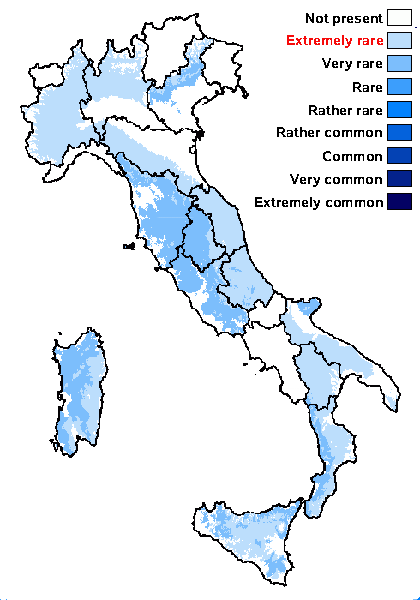
Predictive model
Herbarium samples
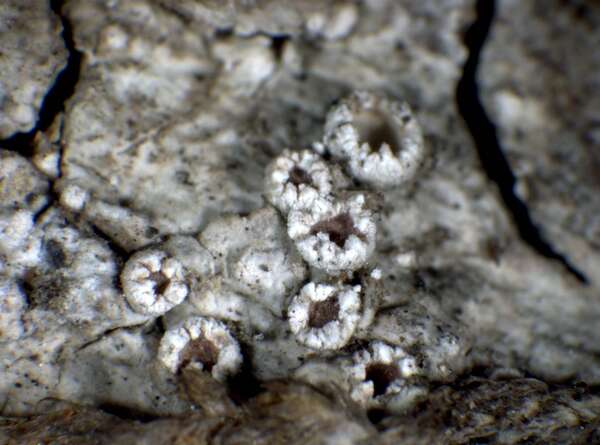

P.L. Nimis; Owner: Department of Life Sciences, University of Trieste
Herbarium: TSB (11473)
2001/11/24
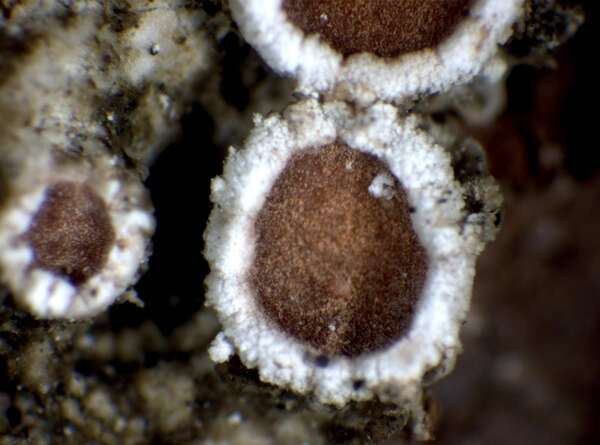

P.L. Nimis; Owner: Department of Life Sciences, University of Trieste
Herbarium: TSB (11473)
2001/11/24
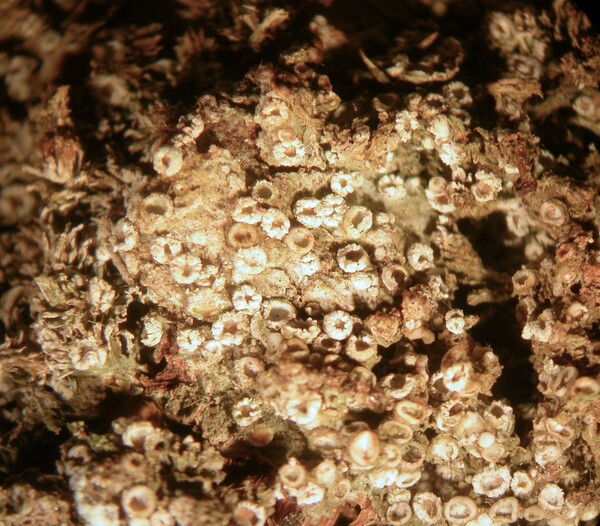

Juri Nascimbene - CC BY-SA 4.0; Owner: ITALIC - Dyades Project - Dept. of Life Sciences, University of Trieste
Italy, Sardinia
2014
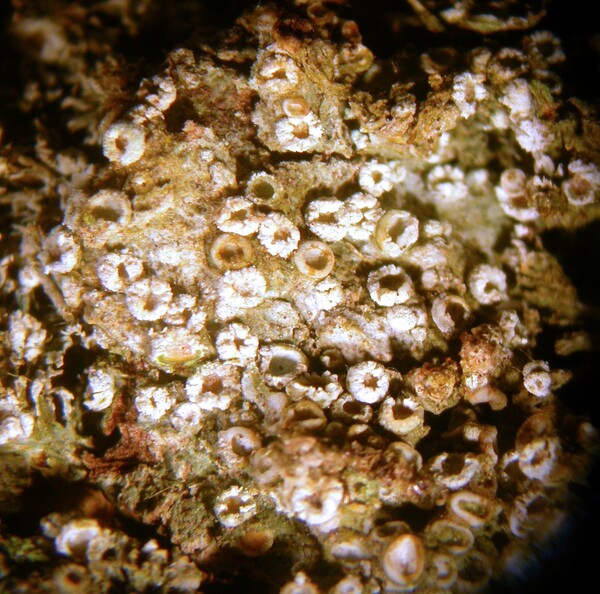

Juri Nascimbene - CC BY-SA 4.0; Owner: ITALIC - Dyades Project - Dept. of Life Sciences, University of Trieste
Italy, Sardinia
2014
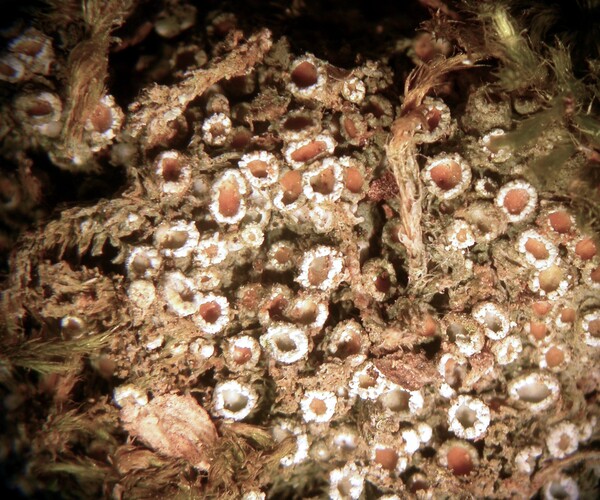

Juri Nascimbene - CC BY-SA 4.0; Owner: ITALIC - Dyades Project - Dept. of Life Sciences, University of Trieste
Italy, Sardinia
2014
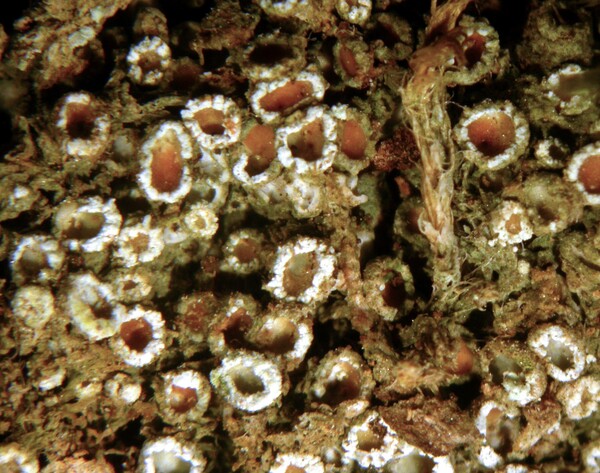

Juri Nascimbene - CC BY-SA 4.0; Owner: ITALIC - Dyades Project - Dept. of Life Sciences, University of Trieste
Italy, Sardinia
2014
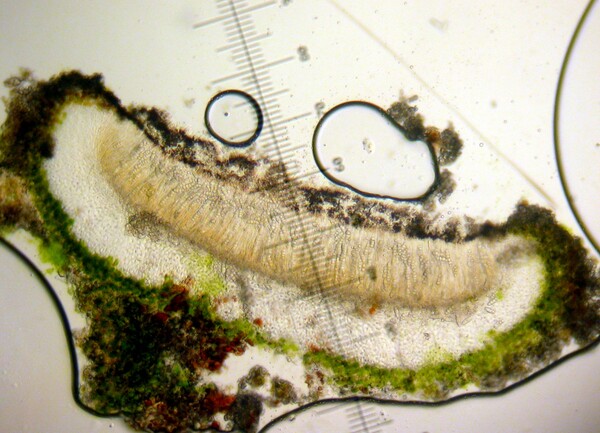

Juri Nascimbene - CC BY-SA 4.0; Owner: ITALIC - Dyades Project - Dept. of Life Sciences, University of Trieste
Italy, Sardinia
2014
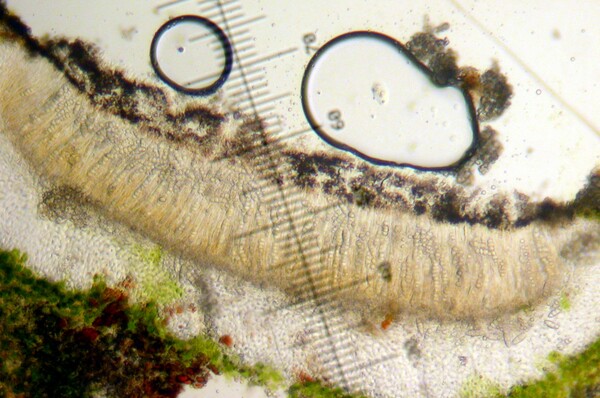

Juri Nascimbene - CC BY-SA 4.0; Owner: ITALIC - Dyades Project - Dept. of Life Sciences, University of Trieste
Italy, Sardinia
2014
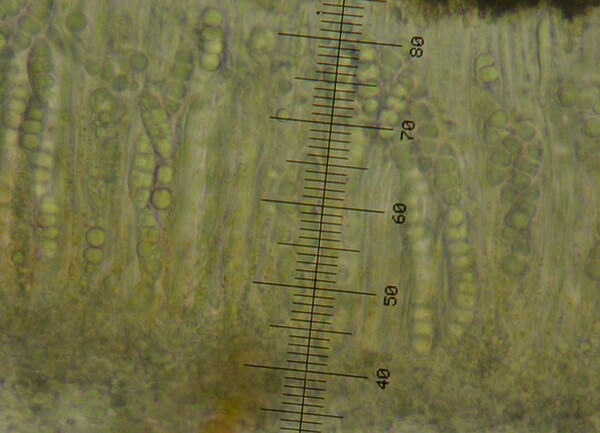

Juri Nascimbene - CC BY-SA 4.0; Owner: ITALIC - Dyades Project - Dept. of Life Sciences, University of Trieste
Italy, Sardinia
2014


Juri Nascimbene - CC BY-SA 4.0; Owner: ITALIC - Dyades Project - Dept. of Life Sciences, University of Trieste
Italy, Sardinia
2014
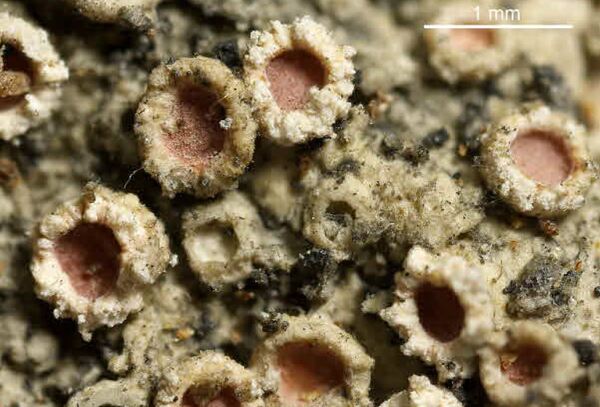

Felix Schumm – CC BY-SA 4.0
[556], Germany, Baden-Württemberg, Stuttgart, Rotwildpark, an alter Quercus. Leg. E. Putzler 06.05.1950
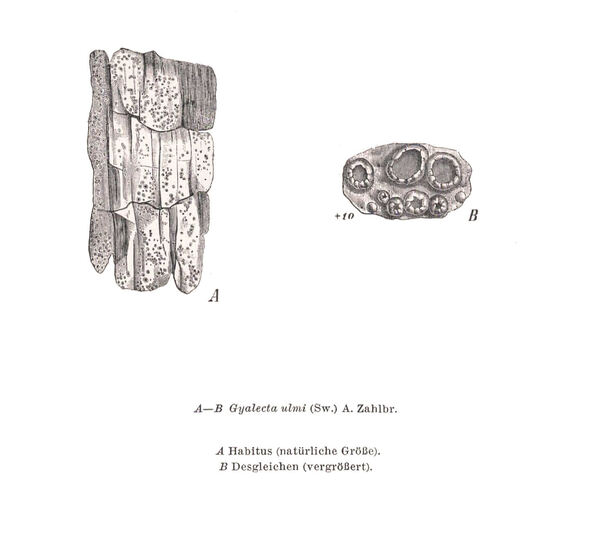
Zahlbruckner A. 1926. Lichenes (Flechten). In: Engler A. (ed.): Die natürlichen Pflanzenfamilien. 2nd ed., vol 8, W. Engelmann, Leipzig, 270 pp.
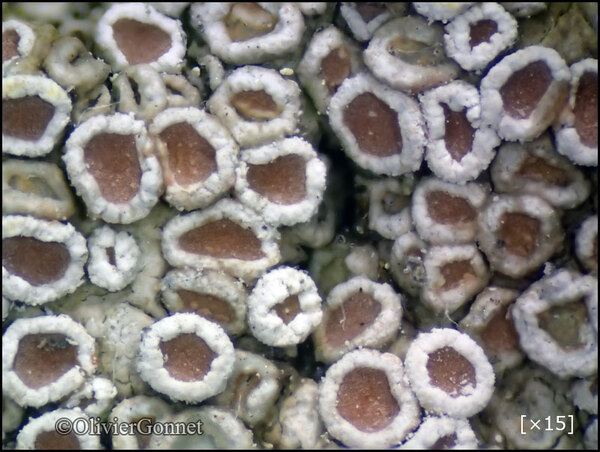
Courtesy Danièle et Olivier Gonnet - Source: https://www.afl-lichenologie.fr/Photos_AFL/Photos_AFL_G/Textes_G1/Gyalecta_ulmi.htm
France, sur frêne - Lans-en-Vercors - Isère
2/1/2017
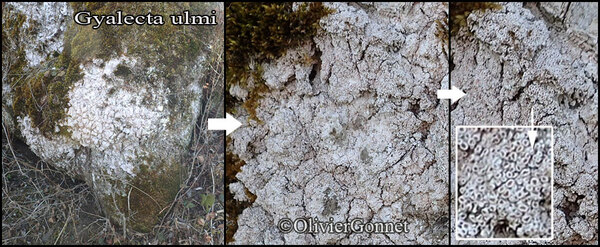
Courtesy Danièle et Olivier Gonnet - Source: https://www.afl-lichenologie.fr/Photos_AFL/Photos_AFL_G/Textes_G1/Gyalecta_ulmi.htm
France, sur frêne - Lans-en-Vercors - Isère
2/1/2017

Courtesy Danièle et Olivier Gonnet - Source: https://www.afl-lichenologie.fr/Photos_AFL/Photos_AFL_G/Textes_G1/Gyalecta_ulmi.htm
France, sur frêne - Lans-en-Vercors - Isère
2/1/2017
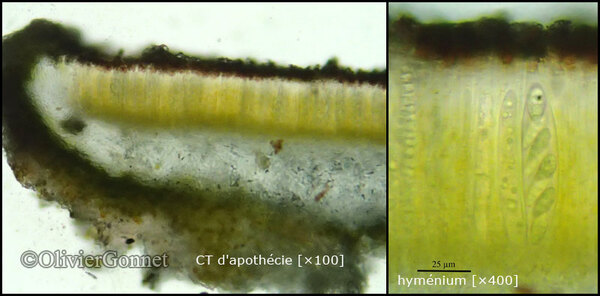
Courtesy Danièle et Olivier Gonnet - Source: https://www.afl-lichenologie.fr/Photos_AFL/Photos_AFL_G/Textes_G1/Gyalecta_ulmi.htm
France, sur frêne - Lans-en-Vercors - Isère
2/1/2017
Growth form: Crustose
Substrata: bark, soil, terricolous mosses, and plant debris
Photobiont: Trentepohlia
Reproductive strategy: mainly sexual
Commonnes-rarity: (info)
Alpine belt: absent
Subalpine belt: absent
Oromediterranean belt: absent
Montane belt: extremely rare
Submediterranean belt: extremely rare
Padanian area: absent
Humid submediterranean belt: very rare
Humid mediterranean belt: absent
Dry mediterranean belt: absent

Predictive model
| Herbarium samples |


P.L. Nimis; Owner: Department of Life Sciences, University of Trieste
Herbarium: TSB (11473)
2001/11/24


P.L. Nimis; Owner: Department of Life Sciences, University of Trieste
Herbarium: TSB (11473)
2001/11/24


Juri Nascimbene - CC BY-SA 4.0; Owner: ITALIC - Dyades Project - Dept. of Life Sciences, University of Trieste
Italy, Sardinia
2014


Juri Nascimbene - CC BY-SA 4.0; Owner: ITALIC - Dyades Project - Dept. of Life Sciences, University of Trieste
Italy, Sardinia
2014


Juri Nascimbene - CC BY-SA 4.0; Owner: ITALIC - Dyades Project - Dept. of Life Sciences, University of Trieste
Italy, Sardinia
2014


Juri Nascimbene - CC BY-SA 4.0; Owner: ITALIC - Dyades Project - Dept. of Life Sciences, University of Trieste
Italy, Sardinia
2014


Juri Nascimbene - CC BY-SA 4.0; Owner: ITALIC - Dyades Project - Dept. of Life Sciences, University of Trieste
Italy, Sardinia
2014


Juri Nascimbene - CC BY-SA 4.0; Owner: ITALIC - Dyades Project - Dept. of Life Sciences, University of Trieste
Italy, Sardinia
2014


Juri Nascimbene - CC BY-SA 4.0; Owner: ITALIC - Dyades Project - Dept. of Life Sciences, University of Trieste
Italy, Sardinia
2014


Juri Nascimbene - CC BY-SA 4.0; Owner: ITALIC - Dyades Project - Dept. of Life Sciences, University of Trieste
Italy, Sardinia
2014


Felix Schumm – CC BY-SA 4.0
[556], Germany, Baden-Württemberg, Stuttgart, Rotwildpark, an alter Quercus. Leg. E. Putzler 06.05.1950

Zahlbruckner A. 1926. Lichenes (Flechten). In: Engler A. (ed.): Die natürlichen Pflanzenfamilien. 2nd ed., vol 8, W. Engelmann, Leipzig, 270 pp.

Courtesy Danièle et Olivier Gonnet - Source: https://www.afl-lichenologie.fr/Photos_AFL/Photos_AFL_G/Textes_G1/Gyalecta_ulmi.htm
France, sur frêne - Lans-en-Vercors - Isère
2/1/2017

Courtesy Danièle et Olivier Gonnet - Source: https://www.afl-lichenologie.fr/Photos_AFL/Photos_AFL_G/Textes_G1/Gyalecta_ulmi.htm
France, sur frêne - Lans-en-Vercors - Isère
2/1/2017

Courtesy Danièle et Olivier Gonnet - Source: https://www.afl-lichenologie.fr/Photos_AFL/Photos_AFL_G/Textes_G1/Gyalecta_ulmi.htm
France, sur frêne - Lans-en-Vercors - Isère
2/1/2017

 Index Fungorum
Index Fungorum
 GBIF
GBIF
